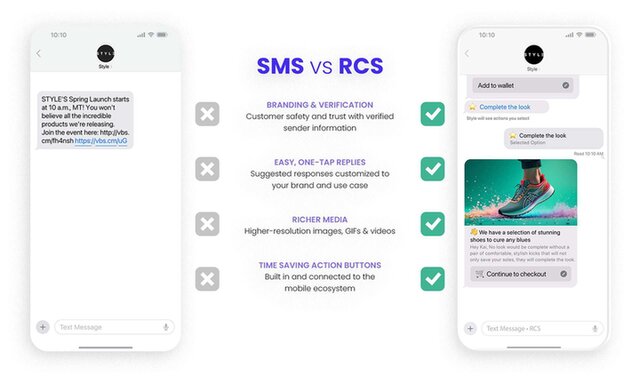
The winners will treat Price Image as a strategic asset — using data to know where to signal value and where to protect margin.
— Edris Bemanian, CEO of Engage3



This holiday season will test every retailer’s ability to manage both their margins and their message. Inflation has cooled since its 2022 peak, but consumer memory hasn’t. After several years of price volatility, shoppers are more deliberate, more digital, and more discerning than ever.
They aren’t just looking for the lowest price, they’re looking for the fairest price. And that’s a crucial distinction. Winning retailers this season won’t be the ones who slash prices across the board, but those who manage their Price Image, or the perception customers have of their overall value.
At Engage3, we’re seeing a clear shift from blanket markdowns to precision pricing. Retailers are increasingly relying on AI-driven insights to identify which items drive perception, which defend profit, and which can be flexed to create room for strategic investment. It’s no longer about discounting everything; it’s about knowing what to hold, what to flex, and what to feature.
A Plateau in Growth, and the Battle for Perception
Holiday 2025 spending is expected to rise only modestly: roughly 2.5% to 3.5% (a level that represents a plateau once inflation is factored in). Most of that growth will come from higher prices rather than greater volume, as lingering cost pressures and tariffs continue to shape consumer behavior.
In this environment, competition will hinge less on absolute pricing and more on how prices are perceived. Research across multiple consumer studies shows that most shoppers plan to spend more this season primarily because prices have risen, not because they intend to buy more. Shoppers are increasingly judging retailers on fairness, transparency, and consistency across channels. When a basket feels balanced (some items up, others down) trust rises even if total spend stays flat.
The winners will treat Price Image as a strategic asset. That means using data to know where to signal value and where to protect margin and resisting the instinct to follow competitors into broad, margin-eroding markdowns. Consumers still expect deals, but they’re more responsive to personalized, well-timed offers on products that matter most to them. Precision and timing now outweigh scale and noise; targeted promotions build credibility where blanket discounting once did.
The “Always-On” Holiday Started in August
The holiday season no longer begins in November. Many shoppers now begin purchasing gifts before October, and some retailers have already shifted marketing calendars into late July. The traditional boundaries between back-to-school, Halloween, and the holidays have blurred into a single, extended shopping cycle.
For retailers, that means pricing decisions made in August now determine holiday outcomes. Hero product pricing, bundle strategies, and early promotional windows must be locked in long before peak season. Waiting for traditional milestones like Black Friday or Cyber Monday means reacting to the market rather than leading it.
Engage3 data across categories shows that the first mover in each local market, whether on a headline toy, a pantry staple, or a seasonal beverage, can anchor shopper perception for the entire season. Once a retailer establishes price leadership or fairness in a category, that perception is remarkably sticky. Early clarity creates room to adjust later without damaging trust, giving thoughtful retailers a durable edge in both traffic and loyalty.
Cautious Consumers
Consumers are shopping again, but they’re still trading down in categories that feel discretionary. They’re mixing national and private-label brands, splitting baskets across channels, and using loyalty programs to offset price anxiety. The competitive landscape has also intensified: price transparency is instantaneous, and shoppers can compare across retailers and brands within seconds.
In that environment, small differences matter. Engage3’s benchmarking shows that even a one-point improvement in Price Image can shift millions in incremental sales during peak weeks. The most advanced retailers now use AI not just to react to competitive price changes, but to anticipate them, modeling elasticity, promotional fatigue, and even local sentiment to align their pricing and promotion calendars with customer expectations.
AI as Co-Pilot, Not Autopilot
AI has become the most talked-about tool in retail, but it isn’t a magic wand. Too often, companies treat it as a black box or delegate too much decision-making to algorithms. That’s risky.
At Engage3, we’ve found that the best outcomes come when AI is a co-pilot. The technology surfaces anomalies, opportunities, and competitive shifts in real time, while humans still make the strategic calls. That balance of intelligence and intuition is what keeps pricing aligned with both brand promise and consumer trust.
We’re building and integrating GenAI for this exact purpose: to unify competitive data, product attributes, and customer behavior into one intelligent decision layer. The result is faster pricing cycles, better promo execution, and measurable gains in both margin and perception.
AI doesn’t replace judgment…it amplifies it.

Leading Through Data, Guided by Purpose
Holiday 2025 will be defined by price-driven growth, tariff-induced caution, and an extended shopping season that begins well before Halloween. Consumers are value-driven but still willing to splurge on select categories that feel meaningful or premium. The season’s winners won’t be those chasing the lowest prices, but those building the strongest Price Image: aligning perception with reality through data, transparency, and trust.
At Engage3, we believe leadership this season will come down to four imperatives:
- Align Price Image with reality: Be transparent about value. Use targeted, data-driven promotions that reward loyalty and protect margin instead of racing to the bottom with mass markdowns.
- Define your true competitive set: Be thoughtful and pragmatic about who your competitors really are and what your value proposition should be relative to them. Use data--not assumptions—to identify overlap in customer missions and market share, and build your pricing and assortment strategies around those realities.
- Pay attention to omnichannel perception: Be intentional about whether or not you have price coherence across stores, digital, and delivery; integrate BOPIS and curbside experiences.
- Do more of what works, less of what doesn’t: Simple in concept, difficult in terms of execution and change management. Double down on high-ROI, high-impact promotions and scale back low-performing, low-return discounts. Use localized demand signals to tailor offers by region and mission, ensuring that promotions resonate with shoppers where they actually matter most.
Price has always been the loudest message in retail, but this year, it’s also the most strategic. Retailers who use AI to balance price, perception, and purpose will win twice: protecting profit today while building loyalty that endures long after the holiday lights come down.





As the President and COO of Mercatus, Sylvain Perrier leads the development and execution of the company’s strategic initiatives, focusing on integrating cutting-edge commerce technology with enterprise SaaS solutions to revolutionize the retail shopping experience.
Perrier manages a diverse team across various departments, fostering external partnerships and leveraging deep market insights to drive growth and technological innovation at Mercatus.
Prior to joining Mercatus, Perrier held several leadership positions with leading tech firms including BrightLane Inc., Springboard Retail Networks, and In-Touch Survey Systems.